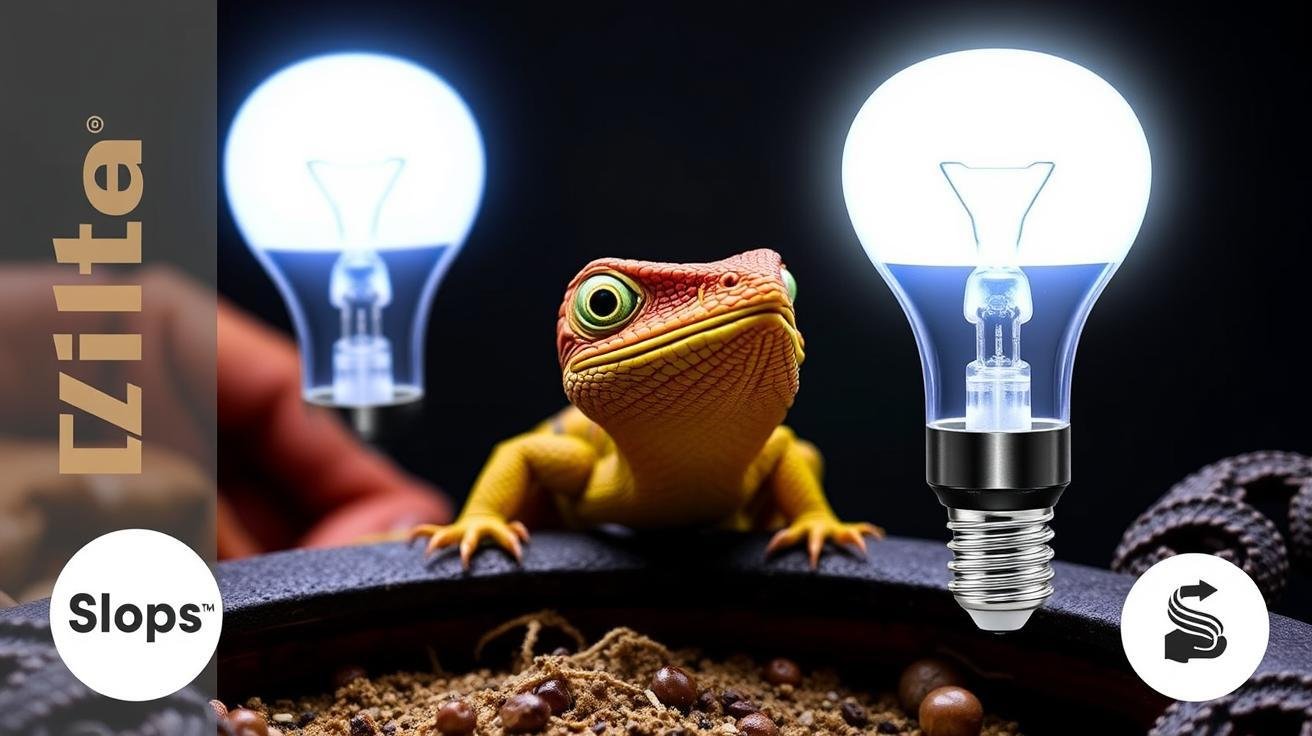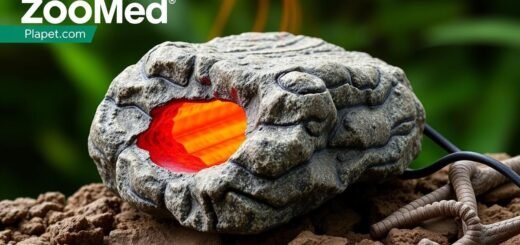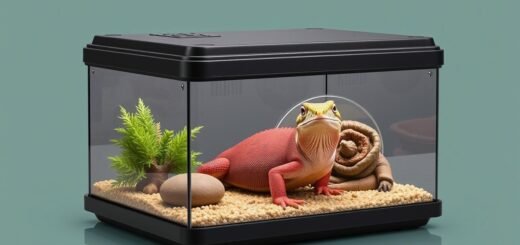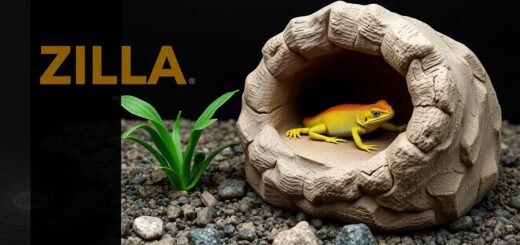Zilla Reptile Heat Lamp Review: Worth the Hype?

As a long-time reptile keeper, I’ve learned that getting the environment right is about 90% of the battle. It’s not just about a cool-looking tank; it’s about creating a tiny, self-contained ecosystem where your scaly friend can thrive. And at the very heart of that ecosystem? Heat. Specifically, a proper basking spot. Reptiles are ectothermic, which means they rely on external sources to regulate their body temperature. Without a dedicated warm zone, they can’t digest food properly, their immune system suffers, and they can become lethargic and unwell. It’s a non-negotiable piece of essential gear for reptiles and amphibians.
That’s why today, we’re taking a deep dive into a popular and accessible option: the Zilla Reptile Terrarium Heat Lamps. These 50W mini halogen bulbs are a common sight in pet stores and online, promising a focused beam of heat perfect for creating that all-important basking area. But do they live up to the hype? Are they reliable? And most importantly, are they the right choice for your pet? I’ve put them to the test to find out. Let’s dig in.
Table of Contents
Key Takeaways
- Effective Basking Solution: The Zilla mini halogen bulbs excel at creating a concentrated, warm basking spot, which is crucial for the health and digestion of most reptile species.
- Great Value: Coming in a 2-pack, this product offers excellent value for the price, ensuring you have a backup ready when one bulb eventually burns out.
- Simple and Compatible: These bulbs are designed for Zilla fixtures but fit standard small sockets, making them easy to install. They are a straightforward, no-fuss heating option.
- Heat Only, No UVB: It’s critical to remember these are purely heat lamps. You will need a separate, dedicated UVB light source for diurnal species like bearded dragons or tortoises.
- CREATE A NATURAL ENVIRONMENT with Zilla Incandescent Bulb; these bulbs provide ambient heat and light to help regulate y…
- PROVIDES AMBIENT HEAT that creates a healthy environment for reptiles; these bulbs deliver essential heat to help mainta…
- FEATURES HEAVY-DUTY FILAMENTS that yield more hours of service from every bulb
- RECOMMENDED FOR USE with Zilla Reflector Domes; these domes are designed for incandescent light bulbs and provide heat a…
My Bottom Line
So, what’s the final call? To be honest, the Zilla Reptile Terrarium Heat Lamps are a solid, reliable, and budget-friendly choice for creating a basking spot. They do exactly what they promise: deliver a focused beam of heat efficiently. For new reptile owners or those with simple setups for species like leopard geckos, corn snakes, or crested geckos (for a slight daytime temperature boost), this 2-pack is a fantastic starting point. They are uncomplicated and get the job done without a fuss. However, for keepers of larger enclosures or animals with more complex heating needs, these might serve better as a secondary or supplementary heat source rather than the primary one. It’s a dependable workhorse, not a high-tech specialized tool, and there’s absolutely a place for that in this hobby.
A Closer Look: Features & Benefits
Let’s break down what makes these little bulbs tick. It’s not just about getting hot; it’s about how they deliver that heat and what it means for your pet.
Focused Heat Beam & Basking Spot Creation
The number one job of a basking bulb is to create a ‘hot spot.’ This isn’t just about warming the whole tank; it’s about creating a gradient. Reptiles are masters of thermoregulation—they move between warmer and cooler areas to maintain their ideal body temperature. The Zilla halogen bulb’s design focuses the light and heat into a specific downward cone. When I tested this with my infrared temp gun, I found it created a distinct basking area of about 95-100°F on a rock placed 8 inches below, while the surrounding air remained several degrees cooler. This gradient is exactly what you want. It allows your lizard or snake to bask directly under the lamp to digest a meal and then move to a cooler side of the habitat to relax.
Mini Halogen Technology: What It Means for You
These aren’t your old-school incandescent bulbs. Halogen technology is a more efficient form of incandescent lighting. In practice, this means they can produce more heat and light for their wattage and often have a slightly longer lifespan than traditional reptile heat bulbs. They also produce a bright, white light that helps simulate a natural daylight cycle, encouraging natural basking behaviors. This visible light is a key difference compared to heat sources like Ceramic Heat Emitters, which produce no light at all. For a daytime heat source, this is a definite plus.
Convenience: The 2-Pack Advantage
Let’s be real: bulbs burn out. And they always seem to do it at the most inconvenient times, like a Sunday evening after all the pet stores have closed. This is where the 2-pack format is genuinely a lifesaver. Having a spare on hand provides peace of mind and prevents a stressful, last-minute scramble to find a replacement. For the price, getting two bulbs makes this an extremely economical pet supply purchase. It’s a simple feature, but one that every single reptile keeper will appreciate sooner or later.
Compatibility & Installation
The bulbs are specifically marketed for Zilla fixtures, like their Mini Heat & UVB Fixture, and they fit perfectly. However, they use a standard E26/E27 screw base (the ‘mini’ refers to the bulb’s physical size, not the base), so they’ll work in most appropriately rated dome lamp fixtures. I tried one in a generic 5.5-inch dome lamp rated for 60 watts, and it worked flawlessly. Installation is as simple as it gets: screw it in, turn it on. Just remember to always use a ceramic socket fixture, as the heat generated can melt standard plastic sockets.
Who Is This Product For?
These Zilla heat lamps are particularly well-suited for a few specific types of keepers and setups:
- Beginner Reptile Owners: If you’re new to the hobby and setting up your first terrarium for a species like a leopard gecko, corn snake, or ball python, these are an easy and effective way to provide necessary heat.
- Small to Medium Enclosures: The 50W output is ideal for standard 10-gallon to 20-gallon long tanks. In a larger enclosure (e.g., a 40-gallon), you might need a higher wattage bulb or use this one to supplement a primary heat source.
- Budget-Conscious Keepers: The upfront cost of the 2-pack is very reasonable, making it an accessible option for those who don’t want to invest in more expensive heating systems like Deep Heat Projectors just yet.
- Owners of Nocturnal Species: For animals that are most active at night, like leopard geckos, this bulb can provide the perfect daytime basking spot to establish a healthy day/night cycle before you switch to a no-light heat source after dark.
The Good and The Not-So-Good
No product is perfect. Here’s a balanced look at what I found during my review.
Highlights (Pros)
- Excellent Heat Projection: Creates a tight, effective basking zone without overheating the entire enclosure.
- Bright, Naturalistic Light: The white light is great for daytime viewing and encouraging natural basking behavior.
- Superb Value: The 2-pack format is cost-effective and provides a convenient backup.
- Easy to Use: Standard screw base fits most ceramic dome fixtures, making setup a breeze.
- Compact Size: The ‘mini’ bulb size is less obtrusive in smaller terrariums compared to larger flood-style heat bulbs.
Potential Drawbacks (Cons)
- Lifespan Can Vary: Like any incandescent/halogen bulb, the lifespan isn’t guaranteed. Some users report they last for months, others say weeks. It’s the nature of this type of bulb.
- Produces No UVB: This is a crucial point. You cannot rely on this bulb for UVB radiation. A separate UVB source is required for most diurnal reptiles.
- Not Suitable for 24/7 Use: The bright light makes it unsuitable for nighttime heating, as it can disrupt your pet’s sleep cycle. You’ll need a different heat source for the night if your ambient room temperature drops too low.
Installation & Lifespan
Setting these up is as easy as changing a lightbulb—because that’s exactly what it is. A few key tips I always follow: never touch the glass part of a halogen bulb with your bare hands. The oils from your skin can create hot spots on the glass, leading to premature failure. Use a cloth or paper towel. Also, ensure the fixture is off and cool before swapping bulbs. The biggest variable with these bulbs is lifespan. On average, I’d expect a halogen reptile bulb to last between 3 to 6 months with a 12-hour-a-day cycle. However, factors like power surges, being frequently switched on and off by a thermostat, or even just vibrations can shorten their life. This is why having that second bulb in the pack is so important—it turns a potential emergency into a minor inconvenience.
How It Stacks Up: Zilla vs. Alternatives
How do these Zilla bulbs compare to other popular heating options?
- vs. Ceramic Heat Emitters (CHEs): CHEs produce heat but no light, making them ideal for 24/7 heating, especially at night. They also tend to have a much longer lifespan. However, they heat the air more broadly and are less effective at creating a focused, intense basking spot. The Zilla bulb wins for creating that specific basking zone.
- vs. Deep Heat Projectors (DHPs): DHPs are a more advanced technology that produces infrared-A and infrared-B, which penetrate muscle tissue more effectively, mimicking the sun’s heat more naturally. They are fantastic but come at a significantly higher price point. The Zilla bulb is a much more budget-friendly option for providing basic, effective heat.
- vs. Standard Incandescent Bulbs: The Zilla halogen is more efficient, often producing more heat for its wattage and having a slightly better lifespan than a cheap, standard ‘daylight’ reptile bulb.
Your Questions Answered (FAQ)
- 1. Do these Zilla heat lamps produce UVB?
No, absolutely not. This is one of the most important things to understand. These are strictly heat and visible light sources. For reptiles like bearded dragons, chameleons, and turtles that require UVB for calcium metabolism and bone health, you must provide a separate, dedicated UVB bulb (like a T5 or T8 linear fluorescent).
- 2. How long do these bulbs typically last?
The lifespan can vary quite a bit. Based on my experience and community feedback, a realistic expectation is anywhere from 2 to 6 months, assuming a 10-12 hour daily cycle. It’s always a good idea to have the spare from the 2-pack ready to go.
- 3. Can I use this bulb with a thermostat?
Yes, and you absolutely should! Using a heat bulb without a thermostat is a safety risk. A dimming thermostat is ideal for incandescent/halogen bulbs as it raises and lowers the power smoothly, extending the bulb’s life. An on/off thermostat will also work but the constant clicking on and off can cause the filament to wear out faster.
- 4. Is the 50W version hot enough for a bearded dragon?
It depends on the enclosure size and the distance from the bulb to the basking spot. In a smaller enclosure (e.g., 20-gallon for a juvenile), a 50W bulb might be sufficient if the basking spot is elevated. For a standard 40-gallon or larger adult enclosure, you will likely need a higher wattage bulb (75W or 100W) to achieve the necessary 105-110°F basking surface temperature.
The Final Verdict
After spending considerable time with the Zilla Reptile Terrarium Heat Lamps, I can confidently recommend them as a staple pet supply for a wide range of reptile keepers. They strike an impressive balance between performance, simplicity, and affordability. They successfully create the kind of intense, localized basking spot that is so vital for a reptile’s daily routine, all while providing bright, natural-looking light.
While they may not have the longevity of a CHE or the advanced technology of a DHP, they aren’t trying to compete in that arena. They are the reliable, everyday tool for the job. The inclusion of a second bulb in the pack transforms it from a simple purchase into a smart, prepared investment in your pet’s well-being. If you need a straightforward, effective, and safe and durable heat source for your small to medium terrarium, you’ll be very satisfied with this choice. Just remember to pair it with a good thermostat and a separate UVB source where needed.




